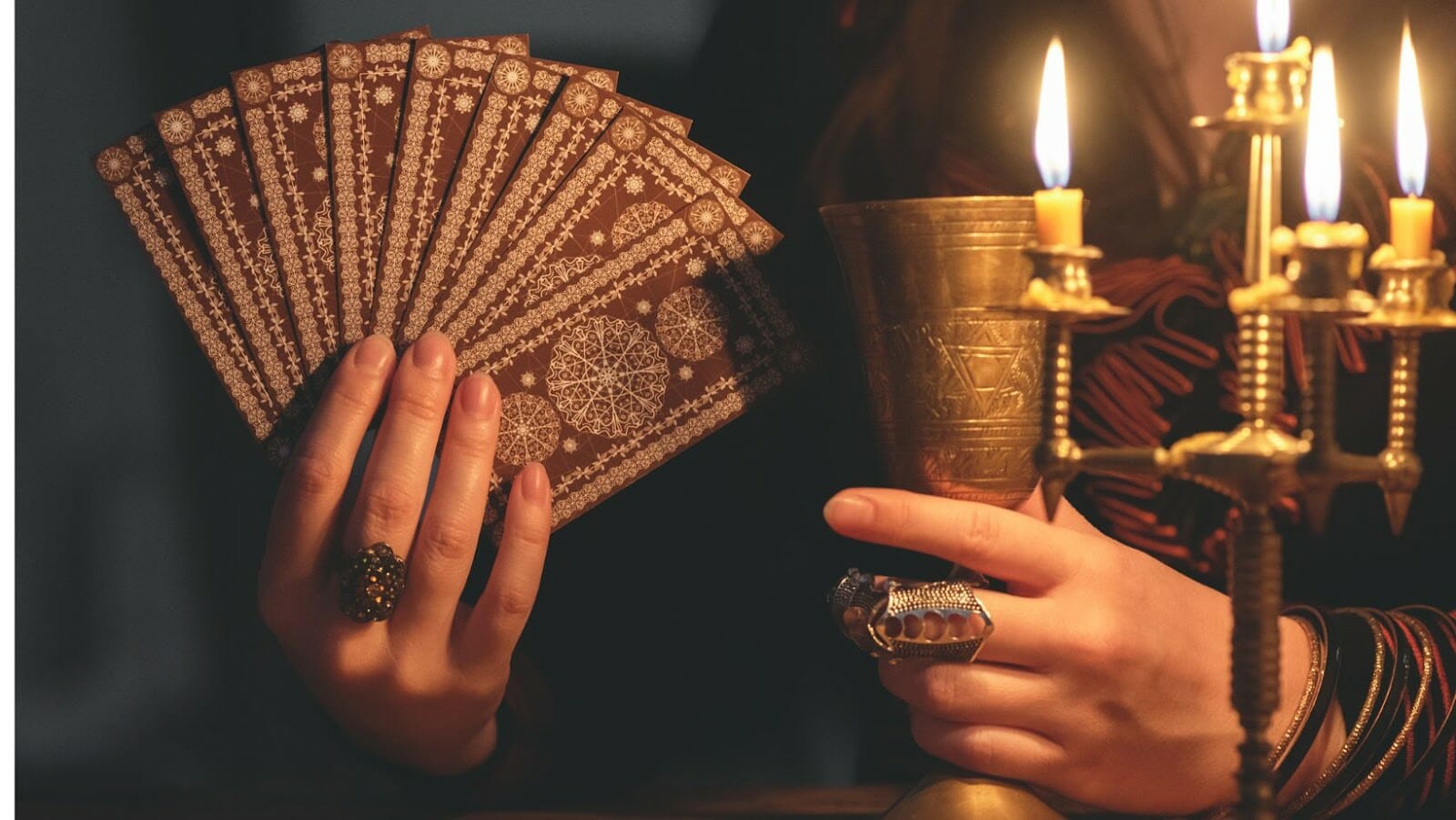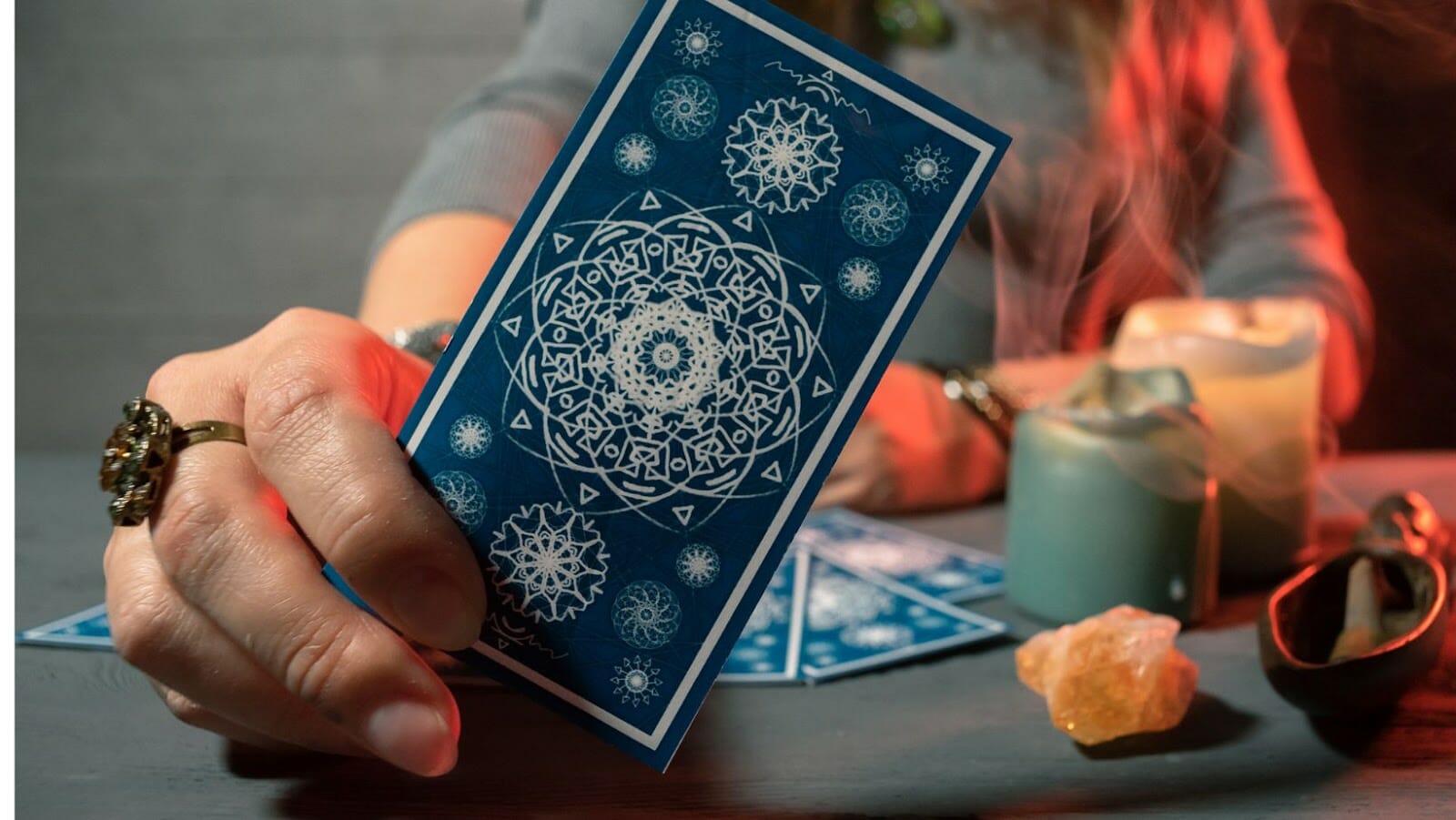In Bushocard, reading the other player’s intentions is a vital aspect of the game that can give you a significant advantage. Paying close attention to each opponent’s moves, body language, and facial expressions can help you anticipate their next move and plan your strategy accordingly.
Here are some tips to help you read your opponent’s intentions in Bu$hocard:
- Watch how your opponents react to their cards – Do they seem happy, disappointed, or indifferent?
- Observe their body language for any signs of excitement, frustration, or nervousness.
- Pay attention to how they bet and how much they bet – Are they being cautious, aggressive or bluffing?
- Notice how they interact with other players – Are they trying to distract or intimidate others?
By carefully analysing all these factors, you can gain valuable insights into your opponent’s intentions and likely moves. This can help you make informed decisions and come out on top in the game.
Pro tip: Remember to keep your own emotions in check and maintain a calm and neutral demeanour to avoid giving away any clues to your opponents.
Understanding Body Language Cues
Being able to read the other player’s intentions in Bushocard can be a key factor in winning a game. One way to do this is to observe the other player’s body language cues. This can be done by noticing the player’s facial expressions, gestures, and posture.
Let’s look at these cues in more detail and discuss how you can use them to understand your opponent’s intentions.
Facial Expressions
Facial expressions are an important nonverbal communication tool that conveys a wide range of emotions. Understanding facial expressions can help you read the intentions of other players in Bushocard and improve your gameplay.
Here are some common facial expressions and what they might indicate in Bushocard:
Smiling: A smile can be a sign of confidence and a strong hand, but it can also be a sign of nervousness or bluffing.
Frowning: A frown may indicate a weak hand or dissatisfaction with a card, but it can also be a tactic to mislead other players.
Raised eyebrows: Raised eyebrows can indicate surprise or excitement, but they can also be a sign of scepticism or disbelief.
Tightened lips: Tightened lips may indicate anger or frustration, but they can also be a sign of determination or confidence.
Dilated pupils: Dilated pupils can indicate excitement or arousal, but they can also be a sign of tension or stress.
Therefore, paying attention to facial expressions can help you interpret the intentions of other players in Bushocard and give you an advantage in the game.
bushocard/3192犬田小文吾
Eye movements provide valuable cues to a person’s internal thought process and can be crucial in understanding body language cues and reading the other player’s intentions in Bushocard.
Here are a few key things to keep in mind:
Pupil dilation: Dilated pupils indicate heightened emotional arousal, whether positive or negative. In the context of Bushocard, it could indicate excitement or anxiety about the possibility of winning or losing.
Eye contact: Direct eye contact can show that a person is focused, engaged, and interested in what the other person is saying or doing. It can also suggest confidence and assertiveness. On the other hand, avoiding eye contact could indicate shyness, untruthfulness, or disinterest.
Blink rate: A higher blink rate can indicate nervousness, discomfort, or anxiety. In Bushocard, it could indicate bluffing or trying to hide something.
Eye direction: Looking up and to the right can indicate creative thinking or fabrication. Looking down and to the left can indicate recalling a memory or thinking logically.
Paying attention to these subtle eye movements can help you better understand your opponents’ intentions, making you a better player in Bushocard.
bushocard/2936上杉謙信
Body language cues can reveal a lot about a person’s intentions in Bushocard. Here are a few physical gestures to look out for while playing the game:
Eye contact: Players who avoid eye contact may be bluffing or hiding something. On the other hand, players who maintain steady eye contact may be confident in their hand.
Hand movements: Twitchy or nervous hand movements may indicate a weak hand, while calm and steady hands may signal a strong hand.
Posture: A slouched or relaxed posture may indicate a lack of confidence, while an upright and alert posture may convey confidence and strength.
Facial expressions: A poker face with no expression may hide a strong hand, while a smile or smirk may indicate a bluff. Look out for micro-expressions that reveal a player’s true emotions.
By observing and interpreting these body language cues, you can make more informed decisions in Bushocard and increase your chances of winning.
Pro tip: Don’t rely solely on body language cues to make your decisions in Bushocard. Use them as a supplementary tool along with your logical reasoning and game strategy.

Listening to Verbal Cues
If you ever find yourself playing Bushocard, it is important to pay attention to the verbal cues of your opponents. Being able to read these verbal cues will give you a better understanding of their intentions and how they are likely to play the game.
This article will explore the importance of paying attention to the verbal cues that other players give off during the game.
bushocard/1814弥三郎
In the game of Bushocard, listening to verbal cues and reading the other player’s intentions is crucial to determining the tone of voice they are using. If a player speaks in a confident, assertive tone, they may have a strong hand and are trying to intimidate their opponents. Conversely, if a player speaks hesitantly or softly, they may have a weaker hand and are trying to downplay their cards.
Here are some verbal cues to look out for:
1. Verbal hesitations, such as “Um” or “Ah”, may indicate that the player is unsure or bluffing.
2. Repetitive phrases, such as “I’m just going to check”, may indicate that the player is trying to avoid raising the bet.
3. Sarcasm or humour can be a way to cover up a weak hand or distract other players.
By paying attention to the other player’s tone of voice and verbal cues, you can make informed decisions and increase your chances of winning in Bushocard.
bushocard/2418太田三楽
In Bushocard, a game of bluff and strategy, paying close attention to the language used by other players can give you important clues about their intentions.
Here are some linguistic cues to watch out for:
1. Use of personal pronouns: Players who use “I” and “me” frequently may be bluffing, trying to assert their dominance in the game.
2. Hesitation and stuttering: A player who is hesitant or stutters may be uncertain about the strength of their hand or may be trying to fake a weak hand.
3. Pauses and intonations: Players who pause or change their intonation may be indicating that they are hiding something or that they are unsure about their next move.
4. Use of adjectives: A player who uses positive adjectives (e.g., great, fantastic) may be trying to make themselves seem stronger than they actually are.
By paying close attention to these verbal cues, you can better read the other player’s intentions and make informed decisions in the game.
Pro tip: Pay attention not just to what other players are saying, but also to how they are saying it.
bushocard/2770快川紹喜
In Bushocard, understanding the timing of responses plays a crucial role in listening to verbal cues and reading the other player’s intentions. A player’s response time can give away their thought process and level of confidence in their hand.
If a player responds too quickly, they may be bluffing or overly confident in their hand. If a player takes too long to respond, they may be unsure or hesitant, indicating a weaker hand.
As you observe the timing of your opponents’ responses, consider what they might be trying to convey and adjust your strategy accordingly. Remember, in Bushocard, the timing of responses is just as important as the words spoken.
Analysing Betting Patterns
Betting patterns are a crucial part of Bushocard and analysing those patterns can give you a huge advantage against other players.
In this article, we will discuss the importance of reading other player’s intentions by analysing their betting patterns.
By understanding what your opponents are doing and why, you can effectively anticipate and act upon their next moves to gain an edge.
Size of Bets
In Bushocard, analysing your opponent’s betting patterns is crucial to reading their intentions and making informed decisions. One of the key aspects of this is paying attention to the size of their bets.
A larger bet typically indicates a stronger hand, as the player is willing to risk a larger amount of chips to win. Conversely, a small bet may indicate a weaker hand, as the player is not as confident in their cards.
However, it is important to note that some players may intentionally make smaller bets in an attempt to deceive their opponents. It is important to observe their behaviour and analyse their previous betting patterns to make an informed decision.
Overall, paying attention to the size of bets can offer valuable insights into your opponent’s hand strength and overall strategy in Bushocard.
Frequency of Bets
In the game of Bushocard, analysing betting patterns is crucial to understand the other player’s intentions and make informed decisions. One of the most significant aspects of this analysis is the frequency of bets.
Here’s what different frequencies of bets can mean:
Low frequency: If a player bets infrequently, it may indicate that they only bet when they have a strong hand. Conversely, a player who rarely bets may be trying to play it safe and avoid losing chips.
Medium frequency: A player who makes medium-frequency bets is likely trying to maintain a balance between risk-taking and caution. They may have a decent hand but not want to risk too much.
High frequency: Players who bet frequently are more likely to be bluffing, trying to intimidate others or steal the pot. However, they may also have a strong hand and be trying to increase the pot’s size.
Analysing the frequency of bets can help players determine whether their opponents are bluffing or have a strong hand, enabling them to make the right decisions during gameplay.
Change in Betting Behaviour
The COVID-19 pandemic has brought about a significant change in betting behavior, with a growing interest in online betting and virtual sports. With more people spending time at home, online betting has seen a surge in popularity.
Analysing betting patterns and reading the intentions of the other players is an important skill to have while playing Bushocard, a popular card game. Here are some tips to help you analyse betting patterns and gain an edge in the game:
Pay attention to the size of bets: Large bets often indicate strong hands, while small bets could suggest weaker hands.
Look for patterns: Observe the other players and look for any consistent patterns in their betting behaviour.
Consider the timing of the bets: Timing is key in Bushocard, and players may bet differently depending on where they are in the game.
Trust your instincts: Sometimes, a player may bet in a way that doesn’t follow any pattern or logic. In these cases, it’s important to rely on your gut instincts and make an informed decision.
By analysing betting patterns, you can better understand the other players’ intentions and make informed decisions while playing Bushocard.

Observing Players’ Reactions
Reading the other players’ intentions in Bushocard can be tricky as it involves observing players’ reactions. To get a good sense of what the other players are trying to do, you need to observe their reactions to the cards that are being played. This can give you a good indication of who has the strongest cards and thus help you strategize your moves.
Let’s take a closer look at the process of reading other players’ intentions in Bushocard.
Response to Cards
In the game of Bushocard, observing players’ reactions and reading their intentions is crucial to your success. Here are some tips to help you respond to your opponent’s cards and make the most out of your gameplay:
Pay attention to your opponent’s facial expressions, body language, and tone of voice when they play a card. These subtle cues can give insight into what their next moves might be.
Take note of the cards your opponent is holding and use deductive reasoning to determine which cards they might play next.
Don’t be afraid to bluff and play strategically. A poker face and calculated moves can throw your opponent off their game and give you the upper hand.
Remember to adjust your gameplay as you go. Adapt to your opponent’s strategy and change your own accordingly to keep them guessing.
Pro Tip: Practice makes perfect! Keep playing and learning from your opponents to improve your reading and responding skills in Bushocard.
Response to Other Players’ Actions
In Bushocard, responding to other players’ actions is a crucial strategy to winning the game. Observing players’ reactions and reading their intentions can give you valuable insight into their thought process and the cards they are holding.
Here are some tips to help you effectively respond to other players’ actions in Bushocard:
Pay attention to how they react when you play a card. Are they excited or disappointed? This can clue you in on how effective your play was.
Observe which cards they choose to keep or discard during each round. This can give you an idea of the suits and strengths of the cards they hold.
Look for non-verbal cues such as facial expressions and body language. Are they nervous or confident? This can hint at the strength or weakness of their hand.
Overall, responding to other players’ actions requires keen observation and analytical skills. By being vigilant and reading other players’ intentions, you can gain a competitive edge and increase your chances of winning in Bushocard.
Response to External Factors
In Bushocard, observing other players’ reactions is key to understanding their intentions in response to external factors.
Look out for these signs and interpret them to your advantage:
Facial expressions: Pay attention to your opponents’ facial expressions as they observe their cards and respond to game events. For example, a quick smile may indicate a good card, while a furrowed brow may indicate a challenging hand.
Body language: Watch how your opponents hold their cards and place their bets. Are they confident or hesitant? Relaxed or tense? These subtle clues can reveal a lot about their mindset and strategy.
Verbal cues: Listen to what your opponents say during the game. Are they trying to bluff, distract, or intimidate you? Do they seem confident or unsure?
By analysing these external factors, you can gain valuable insights into your opponents’ gameplay and use this information to your advantage in Bushocard.
Identifying Bluffs and Tells
Reading the other player’s intentions in Bushocard is an important skill to have when playing the game. To effectively identify bluffs and tells while playing Bushocard, you’ll need to learn how to read the other players’ body language, verbal and physical cues.
Through observation and practice, you can learn to accurately tell when someone is bluffing or telling the truth. In this article, we’ll discuss the importance of learning to read other players’ intentions in Bushocard and the skills one needs to develop to do so successfully.
Common Bluffs in Bushocard
Bushocard is a game of skill as much as it is a game of chance. To gain an edge over your opponents, you must learn to identify common bluffs and tells to read their intentions and make informed decisions. Here are some of the most common bluffs in Bushocard and how to spot them:
The Slow Play: Players that are holding strong hands or are confident in their card selection may choose to slow play to mislead others into betting aggressively or folding. Watch out for players that suddenly slow down after the flop or turn before making a big bet on the river.
The Check Raise: A check raise can be a sign of a strong hand or a bluff. Pay attention to the other players’ actions leading up to the check raise to determine their intention accurately.
The Overbet: Overbets can be a sign that a player is bluffing or has a strong hand they want to protect. Carefully analyze their betting patterns and body language to make a decision.
By learning these common bluffs and tells, you can make better choices in your gameplay, giving you a higher advantage to win the game.

Common Tells in Bushocard
In Bushocard, understanding the common tells of your opponents can be the difference between winning big and losing it all. Identifying the bluffs and tells of other players takes practice and patience, but it can be done with a little attention to detail and observation.
Here are some common tells to watch out for:
- Facial expressions: Look for signs of discomfort or nervousness, such as avoiding eye contact, fidgeting, or sweating.
- Bet sizing: Pay attention to how much your opponent bets and when they do so. A sudden increase in bets may indicate strength, while hesitation or a small bet may suggest a weak hand.
- Timing: Watch for unusual pauses before making a bet or folding. This might indicate that your opponent is contemplating a bluff.
- Verbal cues: Listen for any verbal cues your opponent may give, such as hesitation, stuttering, or nervous laughter.
- Body language: Look for changes in posture or movements, such as leaning forward or crossing arms, which may indicate strength or weakness.
By spotting these common tells, you can better read the intentions of your opponents and make informed decisions that can lead to a successful game of Bushocard.
Pro tip: Remember to also pay attention to your own body language and bet sizing to avoid giving away your own calls to other players.
Staying Alert and Aware during Gameplay
Staying alert and aware during gameplay is vital to identify bluffs and tells of other players and quickly recognize their intentions in Bushocard. Here are some tips to help you stay alert and aware during gameplay:
1. Observe other players’ body language, facial expressions, and hand movements to identify their next moves.
2. Pay attention to players who suddenly change their behaviour or become nervous, as this is often a sign of a bluff or a weak hand.
3. Take note of the cards that have already been played, which can help you predict what cards other players might have in their possession.
4. Avoid getting too caught up in your own gameplay and keep your focus on the other players and their actions.
By staying alert and aware during gameplay, you can improve your chances of identifying bluffs and tells and make better informed decisions in Bushocard.


